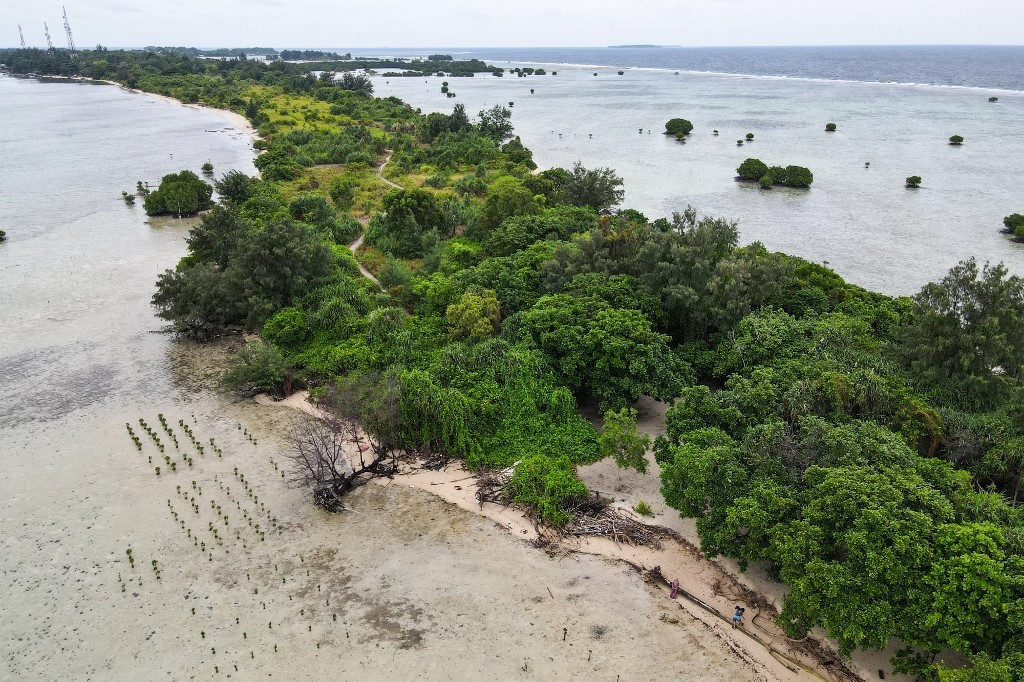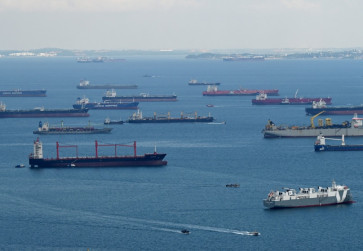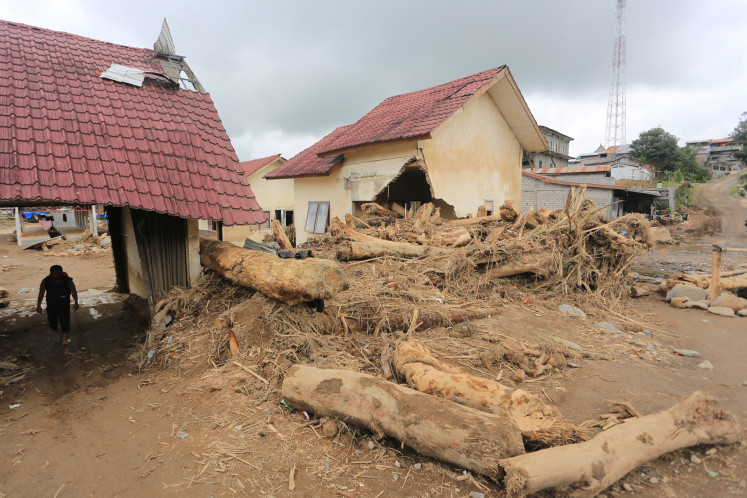Popular Reads
Top Results
Can't find what you're looking for?
View all search resultsPopular Reads
Top Results
Can't find what you're looking for?
View all search resultsMangroves save $855b in global flood mitigation costs: Study
A new study from the University of California, Santa Cruz, reveals that the value of mangroves have risen dramatically in recent years in line with their increasing reliance among people and infrastructure to protect against coastal erosion and other hazards related to climate change.
Change text size
Gift Premium Articles
to Anyone
M
angrove forests have saved an estimated US$855 billion in global flood management costs since 1996, according to a new study from the Center for Coastal Climate Resilience at the University of California (UC), Santa Cruz.
The study highlights the importance of mangroves in protecting coastal communities from floods, storm surges and erosion, offering significant environmental and economic benefits.
“As climate change accelerates the frequency and severity of storms, the need for effective coastal defenses has become increasingly urgent,” UC Santa Cruz says in its news release.
While governments have traditionally relied on infrastructure like levees and dikes, it continues, the new study “reveals that natural ecosystems, particularly mangroves, can be equally, if not more, effective as coastal defenses”.
Titled Building Coastal Resilience with Mangroves: The Contribution of Natural Flood Defenses to the Changing Wealth of Nations, the study used the latest global data from 2020 in analyzing mangrove forests in 121 countries spanning 700,000 kilometers of subtropical coastlines and found a substantial increase in the value of mangroves in reducing flood risks.
Mangroves’ value in flood risk reduction rose by US$130 billion from 1996 to 2010, by $502 billion from 2010 to 2020, and continues to grow as communities and infrastructure increasingly turn to mangroves for protection, despite some coverage loss due to shrimp farming and coastal development.
"The results are clear: Mangroves play a critical role in reducing flood risk and should be viewed as valuable natural assets," study colead Pelayo Menendez said, as quoted by Kompas.com on Monday.
"They offer cost-effective protection to coastal communities and support national wealth by preserving lives, livelihoods and infrastructure," he said.
In addition to protection against flooding, mangroves are a vital component of global strategies for climate change mitigation.
Wiwid Andriyani Lestariningsih, a lecturer in marine science at the University of Mataram (Unram) in West Nusa Tenggara who did not contribute to the study, emphasized the strategic importance of mangroves in mitigating climate change and protecting coastlines.
"Mangroves have extraordinary potential in absorbing carbon, even up to three times more than terrestrial trees. This makes them an important asset in the efforts to reduce carbon footprints and slow the rate of global warming," Wiwid said, as quoted by the online news portal of Radio Republik Indonesia (RRI) on Saturday.
Aside from absorbing carbon through photosynthesis, mangroves’ root systems protect coastlines from coastal abrasion and seawater intrusion.
“Mangrove conservation is very important to maintain the balance of coastal ecosystems, which are vulnerable to climate change,” Wiwid added.
“Mangrove rehabilitation or conservation that is done properly can slow global warming and protect biodiversity in coastal areas.”











